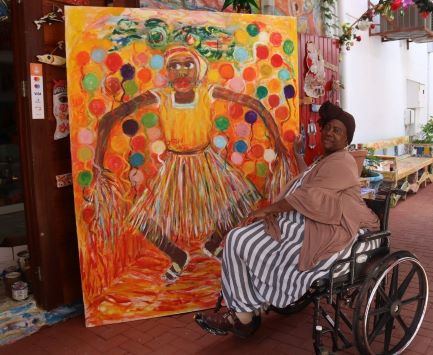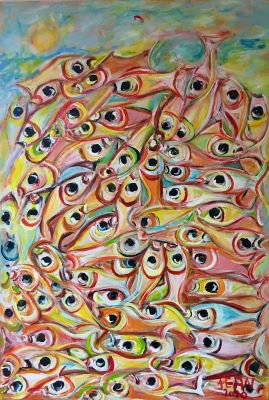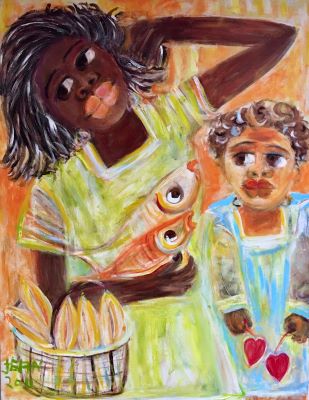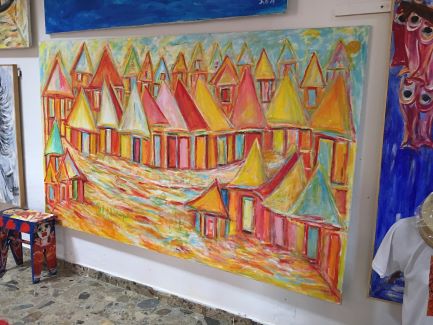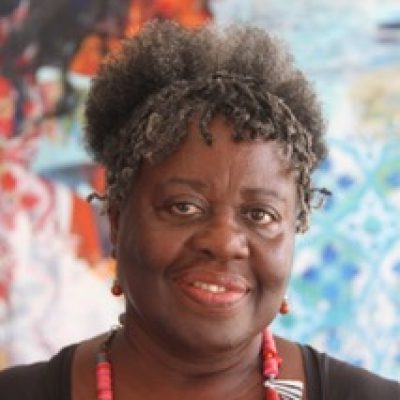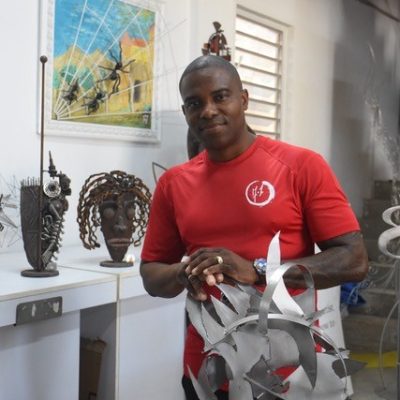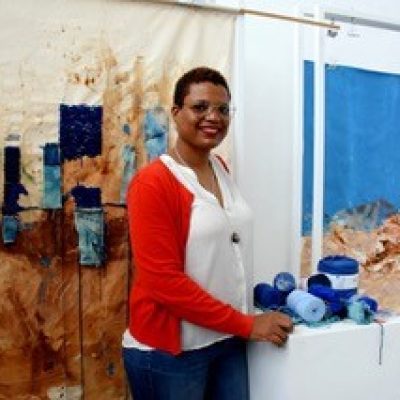
Artistry in times of Corona. Jean Girigori
by Josée Thissen-Rojer
The current COVID-19 pandemic has significantly changed everyone’s daily life to some extent, and this is no different for people working in the visual arts sector. In this series, we visit local visual artists to ask them how their lives have changed, and how they are dealing with the situation.
In September 2019, Jean Girigori (1948) opens an art gallery in Punda on the Passaatstraat, an alley that ends at Gomezplein. There, Jean painted all the walls of “her alley” in her signature style and colors. She even painted all of the benches and tables. Jean sits comfortably in her wheelchair in front of the gallery, happily greeting everyone who passes by.

A large, colorful painting of a dancing woman surrounded by balloons, entitled “Dansa di Victoria”, hangs in front of her gallery. She tells us that she’s just finished the painting and that she wants to support her fellow islanders with this. “If we stick to the regulations and take good care of ourselves, by eating healthy for example, then we will be able to overcome the virus. That’s why I made this painting.” She looks proudly at her work. Then she points to the eyes of the Lora (parrot) in the painting, above the dancer’s head. The eyes symbolize hope, and it is as if the artist wants to create a new, preferably Corona-free future with this work of art.
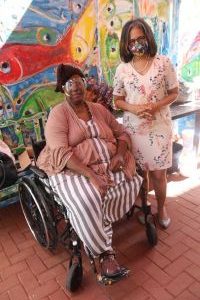
Jean has only had her gallery in Punda for six months when the lockdown is announced in March and her life changed instantly. From one day to the next she no longer has any income, while she does have expenses. Since she is missing her left leg, she is dependent on help. A cleaning lady and assistant are not a luxury for her, and they simply have to be paid. She receives some assistance from the “NOW regulation” (financial aid provided by the government to help relieve some of the financial impacts of the Coronavirus) and she receives a one-time food care package. In the end, it is mainly the help of her good friend George Curiel, who brings her meals regularly, which helps her through the lockdown period.
Once safety measures are slowly relaxed in May, she returns to her gallery in Punda. When she does, she finds a completely deserted city. No shoppers, no tourists, even the pigeons have left. To Jean, it feels less like a city and more like a necropolis, but she refuses to give up. The first painting she creates is a painting with houses on a plaza, a well-known theme in her artwork. But this time she consciously opts for vibrant yellow and orange colors because she wants the work to radiate positivity.
By staying strong during difficult times and handling adversity with dignity, Jean wants to be an example to others. She continues to paint and when she runs out of canvas during the lockdown, she paints the benches and tables made of wood pallets, which are now outside in the alley. Luckily, there is a store where Jean can get her materials and pay for them later. She also recently started selling face masks in her gallery, printed with details from her paintings such as flowers, young women, fish, and Lora parrots.
Jean Girigori is an internationally recognized artist. In 2003 there was a solo exhibition of her work in the Curaçao Museum with the title “Jean Girigori, the painter of the magic arc”. Many prominent figures from the world of art and culture contributed to the accompanying catalog, such as Maria Liberia-Peters, Jennifer Smit, and Frank Martinus Arion (1936-2015), but also, for example, curator Marianne de Tolentino from Santo Domingo. De Tolentino praises her style, which is unmistakably Afro-Caribbean, and how she portrays the burden of the past and the complexity of Caribbean society in her characters.
Jean feels very much involved in society and her paintings always have a message. Shortly after the lockdown, Jean visited with the Minister of Justice, Quincy Girigorie, to hand him a painting of Lady Justice. Jean’s goddess of justice is Afro-Caribbean with long, curly black hair, a mouth with full lips, and simple sandals on her feet. With this gift, she wants to support and encourage him to always stay in touch with the community. “He will gain understanding through communication,” explains Jean, and she hopes he will take her message to heart.
This article was previously published in Amigoe, on Wednesday, December 16, 2020. Photographs by Edsel Sambo.
This text may only be reproduced with reference to the source and author. Copyright of the artworks remains the property of the artist.

